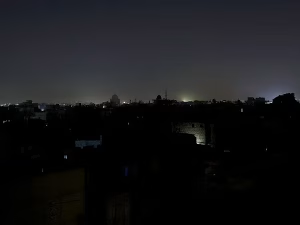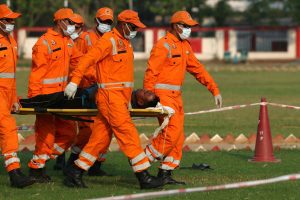New Delhi – The Union Ministry of Home Affairs has directed 244 districts across India to conduct civil defence mock drills on May 7, 2025, amid escalating tensions with Pakistan. These mock drill locations will test wartime standard operating procedures (SOPs) and emergency response measures following the devastating April 22 terror attack in Pahalgam, Jammu and Kashmir, which claimed 26 lives.
Strategic Distribution of Mock Drill Locations
The mock drill locations have been strategically selected to cover both urban and rural areas across the nation. Border states including Jammu and Kashmir, Punjab, Rajasthan, Himachal Pradesh, Gujarat, and Delhi are among the priority mock drill locations due to their proximity to Pakistan. The comprehensive coverage of mock drill locations ensures that India is prepared for any potential threats.
“We are reviewing preparedness. Loop holes to be rectified have been identified,” stated a National Disaster Management Authority official following a high-level meeting at the Ministry of Home Affairs.
Key Components of the Civil Defence Exercise
The nationwide exercise at these mock drill locations will focus on several critical disaster response and civil defence mechanisms:
Air Raid Warning Systems

One of the primary objectives at all mock drill locations is testing the functionality of air raid warning systems. “It is the first step that warns civilians in an emergency situation. The Air Force sounds the alert and each district must ensure that its air raid warning sirens are functioning properly,” a civil defence official explained to news outlets.
Blackout Procedures

The mock drill locations will also practice blackout procedures, a crucial defensive measure during wartime scenarios to minimize targeting by enemy aircraft. These practices haven’t been conducted on such a wide scale since the 1971 Indo-Pak war, making the mock drill locations important testing grounds for modern implementation of these techniques.
First Response and Coordination
At the designated mock drill locations, authorities will test coordination between various emergency services, including civil defence wardens, Home Guards, NCC, NSS, NYKS, and other community volunteers. This multi-agency approach at the mock drill locations aims to ensure seamless response capabilities in crisis situations.
NDRF’s New Standard Operating Procedures
Coinciding with the announcement of mock drill locations, the National Disaster Response Force (NDRF) has released a comprehensive 20-page Standard Operating Procedure (SOP) document to standardize the conduct of mock exercises across all mock drill locations.
The NDRF’s approach categorizes exercises at these mock drill locations into two types:
- In-House Mock Exercises: Conducted using only internal personnel and resources at specific mock drill locations.
- Out-House Mock Exercises: Involving local, district, or state agencies at the mock drill locations to simulate real-life disaster scenarios and test broader response mechanisms.
Three-Phase Implementation Strategy
The implementation strategy for these mock drill locations follows a structured approach:
Coordinating Conference
Held at least a month prior to the exercises, these conferences define objectives for each of the mock drill locations, select participants, and finalize logistics to ensure smooth operations on the day of the drill.
Table Top Exercise (TTEx)
Before practical implementation, authorities at each of the mock drill locations conduct guided discussions simulating worst-case scenarios. This helps participants apply their knowledge in a controlled setting before actual deployment.
Live Mock Exercise
The final phase at all mock drill locations includes alarm activation, response mobilization, and thorough evaluation. The actual drill is carried out followed by detailed debriefings to assess strengths, weaknesses, and areas for improvement at each of the mock drill locations.
Safety Protocols and System Testing


The SOP outlines stringent safety protocols for all mock drill areas, ensuring zero casualties during drills. It also mandates the full functioning of key systems like:
- Incident Response System (IRS)
- Emergency Operation Centres (EOC)
- Medical response teams
- Communication units
Political Context of the Drills
The announcement of these mock drill locations comes amid a series of high-level meetings chaired by Prime Minister Narendra Modi regarding India’s response to the Pahalgam terror attack. The timing of these drills at the designated mock drill areas suggests elevated security concerns and a proactive approach to civilian defense.
Public Participation and Awareness
The exercises at these mock drill areas will reach down to the village level, with active participation from various community organizations. This grassroots approach ensures that emergency protocols are not just theoretical but practically implemented across all mock drill areas.
Historical Significance
This nationwide civil defence drill across multiple mock drill areas marks the first exercise of its scale since the 1971 Indo-Pak war, highlighting the seriousness with which authorities are approaching the current geopolitical tensions. The selection of these mock drill areas reflects a strategic assessment of vulnerable areas and critical infrastructure that would need protection in conflict scenarios.
Expert Assessments
Security experts have emphasized the importance of these drills at the designated mock drill locations as essential preparation for potential escalation. They note that the comprehensive coverage of mock drill areas demonstrates the government’s commitment to civilian safety and national security preparedness.
“These drills at carefully selected mock drill areas are not about creating panic but ensuring that we have robust systems in place if the situation deteriorates,” noted a senior defense analyst who preferred anonymity.
Next Steps
Following the May 7 exercises at these mock drill areas, authorities will compile detailed reports on performance, identifying strengths and areas requiring improvement. This data from all mock drill areas will inform future preparedness strategies and resource allocation for civil defence initiatives nationwide.

The Center has encouraged citizens near these mock drill locations to participate actively and familiarize themselves with emergency protocols, including recognizing warning signals and knowing evacuation routes.
Final Word
As India conducts these unprecedented civil defence exercises across 244 mock drill areas, the message is clear: preparation is paramount. While diplomatic channels remain open, the strategic distribution of these mock drill areas signals India’s commitment to civilian protection amidst rising regional tensions. The coming days will reveal much about both the state of India’s civil defence readiness and the geopolitical trajectory of Indo-Pak relations.

